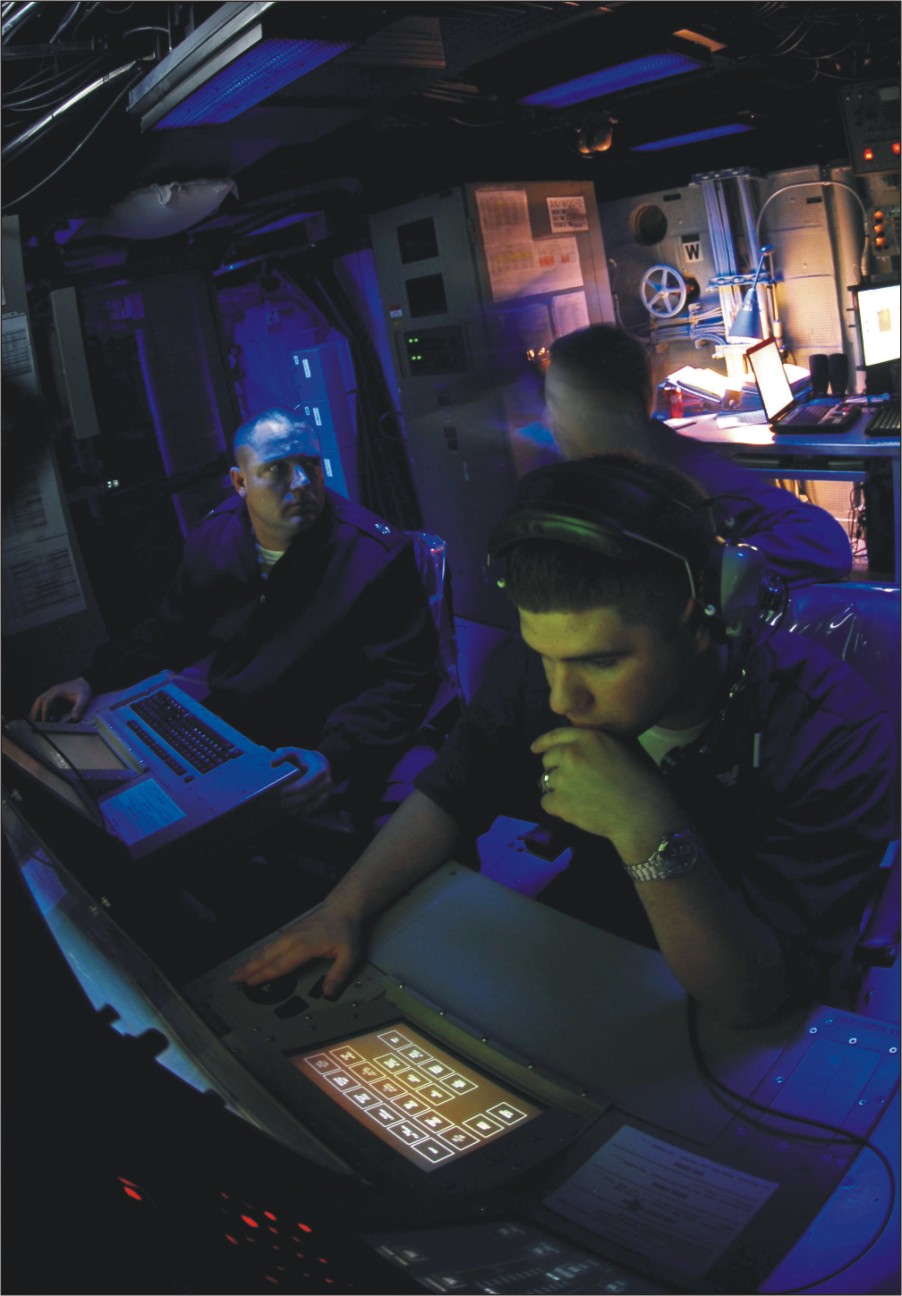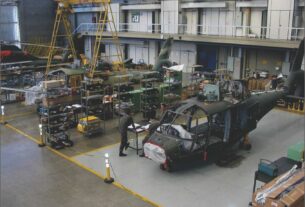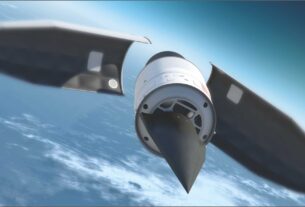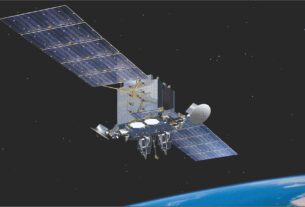As the battlefield is getting saturated with new weapons and platforms, timely accessing fast data holds key to success of any military operation that largely depends on digital intervention to score early on the rivals in a war zone that is unforgiving. Network Centric Warfare has proven its mettle and become battlefield necessity on numerous occasions. Without electronic signals, no commander can decide what he wants to do next.
Modern war zone is fast becoming a hub of digital war fighting ground through various Network Centric Operation platforms than mobilization of thousands of ground troops to invade into enemy territory.
NCW has changed the whole concept of today’s warfare.
Thus, considering military forces as systems, or as ‘systems of systems’, can offer a fresh dimension to develop a new understanding of modern warfare in which NCW operations are deciding factors.
The methods by which military force elements interact in the modern battle space are being transformed by contemporary information technology.
Information technology is the centre-piece of the modern era, the determining feature of the Tofflers’ so-called ‘third wave’ of human civilisation. Information technology is itself now undergoing a fundamental shift from platform-centric computing to network-centric computing.
Significant research and development investment in the civil information technology sector has led tokey technologies that have created the conditions for the emergence of network-centric computing.
The network is becoming the computer, with sufficient communication, engineers can now create any computer network topology they want, allowing a redefinition of the optimal computing architectures. This shift is most obvious in the explosive growth of the Internet, intranets, and extranets.
Network-centric computing operations are characterised by information-intensive interactions between large numbers of heterogeneous computational nodes on the network.
Whether these interactions are focused on commerce, education, or military operations, there is ‘value’ that is derived from the content, quality and timeliness of information moving between nodes on the network.
This value increases as information moves toward 100 per cent relevant content, 100 per cent accuracy, and zero time delay – towards that elusive goal of knowledge dominance.
Armed forces have seized upon these developments in civilian information technology. In the US Joint Vision 2010, the emerging operational concepts are characterised as ‘Network-Centric,’ and the conception of future warfare described as ‘Network-Centric Warfare’.
Network-centric warfare is as much a concept as an item of hardware. This system-based concept is useful for any size of force when preparing for, and waging, armed conflict. Indeed, in leveraging off commercial information technology developments, network-centric concepts may be particularly useful for those forces without a large budget.
Network-centric warfare is a derivative of civilian network-centric computing, whose principles have been derived by observing successful businesses and their commercial experiences.
Network-centric computing is being exploited by companies to provide a competitive edge in the commercial business sector; and in a similar manner, network-centric warfare seeks to attain an edge in warfare.
The entry fee for network-centric warfare is a high performance information grid; it is the keystone of secure network-centric computing.
The information grid is the fundamental building block which provides the infrastructure for receiving, processing, transporting, storing, and protecting information.
The information grid is a ‘network of networks’ consisting of communications paths (‘links’ or ‘pipes’), computational nodes, operating systems, and information management applications which enable network-centric computing and communications across the battlespace.
The information grid can consist of both military and commercial communication capabilities and transmit multiple information types in multiple modes at multiple data rates. Voice, data, and video can be transmitted via point-to-point or direct broadcast.
A key requirement for an information grid is information protection; the grid must have embedded capabilities for Information Assurance to prevent intrusive attack and assure commanders that the information being presented is genuine.
The combination of these capabilities enables the information grid to provide the warfighter with assured high speed access to the true information required to dominate across the tactical, operational and strategic levels of conflict.
Sensor grids are composed of air, sea, ground, space and cyberspace based sensors. The elements compromising the sensor grids can include dedicated sensors, sensors based on weapons platforms, and sensors employed by individual soldiers, as well as embedded logistic support sensors.
The information from the sensor grid is distributed across a force through the connectivity and computing capabilities of the information grid.
Ideally, the networked sensors create engagement quality awareness. This means that the time delays in passing track information to the platform firing the weapon (the ‘shooter’) must be short enough to allow accurate weapons engagement.
Against relocatable land targets, delays of an hour or more may be acceptable if the target will not move in that period.
Against naval vessels, lags of some minutes may be permissible as in this time a ship may not have moved outside the search radius of the seeker of a guided weapon (eg. an anti-ship missile) fired by the shooter using the target positional data passed from the sensor grid through the information grid to the shooter.
However, for successfully engaging fast jet combat aircraft, time lags through the grids will probably need to be less than a quarter of a second, as aircraft very rapidly leave the small area an air-to-air missile searches after firing.
Sensor grid
Abstractly, sensor grids can be viewed as a sets of ‘sensor peripherals’ (the actual sensor devices) with ‘sensor applications’ installed on the information grid to enable universal sensor recruitment, multi-mode sensor tasking and data fusion.
Sensor grids can be persistent or transient. For example, a transient ‘mission specific’ sensor grid optimised to support the Suppression of Enemy Air Defences (SEAD) task while a strike package is within hostile airspace will have different elements than a sensor grid optimised to perform a long duration, air defence task.
Ideally, the operational architecture of a sensor grid could enable subsets of grid sensors to be dynamically tasked to support specific ‘shooter’ missions. The communications grid could dynamically match the optimum sensors to the most suitably positioned and equipped shooter.
The size, composition and complexity of the sensor grid required to support a specific mission is a function of the level of battlespace awareness required to prosecute the mission.
The number and types of sensors required to support a specific mission in a sector of the battlespace will increase or decrease as a function of the size and terrain of the battlespace, as well as the disposition of friendly and enemy forces in the battlespace.
A few wide area sensors may suffice for sea surveillance over a large area, but in an urban environment a large number of local area sensors will be needed.
Air, sea, ground, space, and cyberspace based ‘shooters’ form the engagement grid. When cued by the sensor grid information distributed by the communications grid, the engagement grid can apply effects at precise places and times.
As with the sensor grids, the engagement grids can be envisioned as a set of ‘shooter peripherals’ with ‘shooter applications’ installed on the information grid. These ‘shooter applications’ consist of software for command and control, and for weapon employment.
As with sensor grids, engagement grids could be persistent or transient. For SEAD support of a strike package operating inside hostile airspace for an hour, only a transient grid able to engage targets when they threatened friendly assets may be necessary.
However, for long term air defence of a critical high value asset a persistent grid may be essential to allow engagement continuously day or night for a protracted period.
The combination of the grids allows the massing of effects from sea, land, air and cyberspace shooters to give better depth of fire, faster reaction times, increased lethality and a higher probability of kill.
The networked sensors can allow the shooters to have a common operational picture allowing the networked shooters to undertake cooperative engagements. The correct target can be engaged, at the right place, with the minimum effort and minimum risk to friendly forces.
Applying the US network-centric warfare concepts, a modern military joint force can be considered as a system composed of a communications grid, a sensor grid and an engagement grid.
However, the term communications grid is potentially misleading, as it includes by implication the command functions. From a conceptual viewpoint it may be preferable to include a fourth ‘command’ grid.
Lethality
The command grid would principally be the province of human decision makers but could include knowledge based, artificial intelligence, software applications that acted as command advisers able to recommend courses of actions.
Including a command grid would allow the useful Boyd’s loop of Observe, Orient, Decide, Act (OODA) to be incorporated as functions alongside the virtual, electronic, grids.
The sensor grid would observe, the communications grid (which includes data fusion and dissemination) would orient, the command grid would decide and the engagement grid would act. To achieve a mission, the grids must interact and exchange information.
The girds are inherently virtual and can be standing, or created on order, to meet the command and combat situation as required. Even from an established grid system, different quality services can be provided to meet the needs of different users.
A high level commander will only need broad positional information on friendly and hostile force location, but over the whole theatre. Conversely, an air defence commander using Cooperative Engagement Capability will need near-real time, highly precise hostile aircraft track data, but only covering the small area in which the engagement is taking place.
Conceptually, the command, information, sensor, and engagement virtual grids overlay the operational theatre.
The various force elements, which could range from individuals and single platforms to battle groups, would each be nodes on one of the grids able to receive, act on, or pass forward data as appropriate.
The own force nodes within any grid overlaying the non-linear battlespace would be most dense in the friendly regions, and be clustered around important assets or areas. The grid networks would extend from the rearward, friendly domains into the depths of hostile territory.
Deep in the hostile domain, the nodes would be more sparse and dispersed, with connectivity back to other nodes in friendly territory a major issue.
The hostile force would probably mirror image this visualisation of friendly force deployment, with hostile force elements located throughout the battlespace but clustered around areas perceived as critical centres of gravity in own force territory.
In the network-centric warfare system, modern information technology can enhance force element interaction to levels not previously experienced. Air, sea, land, space and cyber force elements can be linked and operate as a single networked system with a single operational aim.
This integrated, tightly-coupled, force concept is perhaps a step beyond the current concepts of joint forces, which focus more on command issues in determining whether or not a force is joint.
In this modern age of manoeuvre war that seeks to defeat an opponent’s military forces by guile and cunning rather than frontal attrition battles, friendly forces seek to operate inside an opponent’s OODA loop.
To allow this, the hostile OODA loop can be degraded by friendly force attacks and be prevented from operating optimally. The efficient and timely operation of a hostile OODA loop can be thwarted by attacking an opponent’s command, communications, sensor and engagement grids by physical, electronic and psychological means.
The physical and psychological means are the traditional methods of the warrior, but the electronic means of jamming and deception can now be combined with information warfare, cybernetic warfare and transnational infrastructure warfare.
The visualisation of a miliary force as a system comprised of command, communications, sensor and engagement grids allows an appreciation of the utility, impact, and integration of the disparate and dissimilar means of attack modern technology has made possible.
Attacks can be considered as being focussed against a specific grid’s vulnerable elements, or to prevent the interaction between the elements. Each grid system is a small, single system within a larger system of systems, and hence grid interaction may be a most profitable focus of attack.
Taking the broad view, the aim of these physical, electronic and physiological attacks is to cause a systemic failure within the opposing military system.
During combat, friendly forces must maintain the integrity of their own system while attacking the hostile system. Friendly forces must focus, not on simply destroying individual force elements in attrition style battles, but in attacking the interaction between the elements; that is disrupting the network by shock.
The four grid construct allows a hostile military system to be conceptually divided into constituent elements and the interactions examined to determine where force may be best applied to have the desired effect to meet the strategic goals.
In different situations, different grids or parts of grids will be the preferred place for the attack to focus on; for example, if an adversary only has a few sensors but a large number of shooters then the sensor grid may be a profitable avenue of attack.
One of the first modern networked systems was the UK Air Defence system which defeated the Luftwaffe in the Battle of Britain.
In retrospect, the Luftwaffe should have concentrated its attack on the RAF on the Chain Home radar stations, the system’s sensors, rather than attempting to destroy the much more numerous fighter aircraft, the engagement grid, for which the radar warning information was critical.
The Luftwaffe focussed on destroying platforms, rather than conceptualising the RAF air defences as a system and designing an attack to prevent the interaction between the radars and the overall system. The Luftwaffe had overlooked the need to take a systemic approach to air defence.
Command and control
More surprising perhaps was the RAF response to the rising attrition suffered by Bomber Command squadrons, after 1941 from the steadily improving German night air defence systems.
Bomber Command began to use sophisticated electronic attack methods which degraded, but did not physically threaten, radar target detection and tracking, and wireless communications, additionally the Command eventually sought to shoot night fighters down by providing escort fighters.
The RAF may have found physical attack of the German sensor grid, the radar sites, more useful in reducing attrition as the sensors could be easily located, were relatively few and vulnerable to air attack weapons.
Indeed, there has been a gradual application of Suppression of Enemy Air Defences (SEAD) techniques over the least 50 years in an attempt to reduce losses of attacking aircraft to hostile air defence systems.
SEAD concepts take a systemic approach to defeating an opposing system and use a variety of tools and methods to engage a system’s command, communication, sensor and engagement grids to defeat an opponent’s OODA loop.
A comparison of loss rates between those air forces using SEAD doctrines and methodologies and those who have not is illuminating.
The Argentine Air Force and Naval Air Arm suffered unsustainable losses of more than ten per cent a mission while attacking ships defended by the Royal Navy’s integrated air defence system; this attrition determined the war’s outcome.
By comparison the loss rates of the Israelis in the Bekka Valley campaign and the US forces during Desert Storm were some four orders of magnitude less.
The difference in attrition rates indicates that attention to SEAD can reduce losses to insignificance.
While air defence equipments have steadily improved since World War II, the loss rates to defensive systems sustained by air forces embracing SEAD has steadily declined.
SEAD may be a harbinger of 21st century network warfare concepts which seek to engage and defeat an opponent’s military system, not individual platforms.
Visualising war as a clash of opposing systems each comprised of four grids overcomes the boundaries imposed on concepts, operational employment and force structures by Service-or environment-centric views.
The integrated battlespace can provide more flexibility for all of the forces in the theatre of operations and will enhance the contribution of air power. However, the independent status airmen have historically accorded air power should disappear as integrated operations are made possible.
The tighter knitting of the operational environment will demand a revisiting of air power doctrine to accommodate the possibilities available in the integrated battlespace.
Air power will continue to grow as an instrument of national power, but at the same time the independence which characterised air power and airmen will fade in the common vision of battlespace management.
The inherently different capabilities of air elements compared to surface elements allow each to bring different capabilities essential to the overall military system.
In the engagement grid, the air shooter elements could make use of their speed and range of action to provide limited duration, wide area coverage, or rapid reinforcement of focal areas.
Conversely, surface force shooter elements able to undertake long duration, point operations would focus on providing focal area coverage.
In a similar manner, for the sensor grids, air elements could use the positional advantages from high altitude assets to provide short duration, wide area surveillance, reconnaissance and target acquisition coverage; while surface elements would provide long term, focal area coverage.
Each Service element can bring useful and unique capabilities to each of the four grids, but each capability must be able to ‘plug and play’ in the larger joint force arena. Plug and play applies as much to human beings as to machines.
The system approach can embrace and integrate not only the contribution of the three Services but also that of extra-Service organisations. The armed forces are making increasing use of the civilian infrastructure for support tasks as diverse as providing intelligence to repairing damaged equipment.
Network-centric computing both forces, and empowers, matrix management with uncertain impacts on command during combat.
With a network centric approach, development plans for future forces need to embrace a system of systems approach where the focus is not on platforms, but on nodes.
Instead of considering platforms as autonomous stand-alone entities, equipment and platforms should now be treated as nodes of a network.
The ability to connect to the information grid now emerges as a primary source of combat power with ‘plug and play’ interfaces between platforms and the information grid critically important. Connectivity becomes a determinate of combat effectiveness.
This approach alters the present methodology when considering force structure development.
The goal of superior quality has dominated Western air combat developments since World War II and allowed Western air forces to usually prevail against less sophisticated opponents.
However, superior quality has come at a steadily accelerating price tag; aircraft costs have been rising at five to ten per cent annually.
The next generation of Western air combat aircraft, exemplified by the F-22, F/A-18E/F, Rafale and Eurofighter, are reaching the limits of affordability for most nations.
The impact of rising costs is to force down the numbers of aircraft being acquired to replace the existing aircraft. From a systems perspective, the quality of the new aircraft must be sharply more than the aircraft replaced to compensate for the decline in numbers.
Network-centric warfare has the potential to provide a system incorporating lower cost, less sophisticated aircraft which is more effective than one emphasising small numbers of highly sophisticated aircraft.
However, system design needs to be carefully considered to achieve the most cost-effective result.
Depending on the system architecture, the high cost of a sophisticated fighter aircraft fleet option may simply only be spread across a larger number of less advanced equipments; the system cost could as a whole be the same or higher than the platform-centric approach.
Cost attribution in a network architecture system can be difficult, as defining where an open system starts or finishes is inherently difficult.
It is a truism that everybody wants to use the information grid but no one wants to pay for it or to have the costs associated solely with their program.
Moreover, with a system approach the desired operational effectiveness cannot be obtained without the whole system, if some elements are not acquired the system may be completely ineffective in some situations.
The network-centric approach can also improve affordability by allowing sharing of information amongst the various elements of a system. In the current generation of aircraft, each aircraft carries a suite of complex avionics equipment.
Each current aircraft is an autonomous system with internal command, communications, sensor and engagement grids. By expanding the network on an aircraft to include off-board elements each individual aircraft need not all carry a full suite of avionics.
Avionics typically constitute some 50 per cent of the cost of a modern combat aircraft so there are significant costs involved in carrying individual avionics suites on each aircraft.
If avionics can be carried on only some aircraft and shared across a networked formation, the overall cost of a formation could be sharply reduced.
This concept means that aircraft may not be able to operate autonomously in some situations, but this situation is already apparent under the platform-centric approach where air combat aircraft are vastly more effective when supported by aircraft such as AEW&C.
Cost effective
The systems approach of the network centric warfare concept may be essential to allow the air forces of smaller nations to remain in the air combat business, for at least the next generation of fighter aircraft.
Without it, nations which cannot afford to maintain effective air combat forces may need to embrace asymmetric strategies, accept defeat in circumstances where a hostile nation can employ or threaten to employ effective airpower, retreat from high technology participation in an alliance, or focus on providing manpower not capital intensive armed forces.
However, the network-centric warfare concept is complex and sophisticated, and is not easy to implement; there is no such thing as ‘turnkey’ netwar.
The dangers of micro-management are evident in the network-centric warfare concept but may be minimised by commanders looking only two command levels down, and learning to practice information sufficiency rather than seeking information overload.
Higher level commanders should always be focussing on a force’s future moves and not be sidetracked by the demands of the moment to interfere with lower level subordinates’ handling of current activities.
However, a possible gain from network-centric warfare is that with a shared picture the command chain could avoid the need to be constantly asking questions to ascertain the activities being undertaken and results obtained. The common picture may give commanders more faith in subordinates, not less.
Coalition warfare poses particular challenges as multi-national forces will need to connect into other nation’s grids at all levels. Questions of security immediately arise with concerns of unauthorised individuals or nations ‘surfing’ classified national-only nets.
There is also the concern over accepting a common picture, to which all have contributed, as an accurate picture.
If one nation’s forces engage a civilian target because the information provided to the net by another country’s sensors was in error, which nation will feel the weight of international opprobrium? Will nations be comfortable authorising national forces to launch weapons based on net data of uncertain origin and veracity?
A major criticism of network-centric concepts is that they are irrelevant in the ‘operations other than war’ which form the majority of the crises that military forces are involved in.
However, there may be considerable utility in many such scenarios, if military forces can act as ‘node connectors,’ (rather than ‘node destroyers’) to assist crisis stricken regions.
The military networks can act as a Network Central for the wide array of national and multi-national agencies that respond to complex humanitarian emergencies and international crises.
There is a new fashion in thinking about armed conflict. The network-centric concept is based on the current wave in commercial information technology, but has utility beyond simply enhancing military equipment.
When combined with insights from viewing armed forces as complex systems, network-centric warfare concepts can aid in thinking about preparing and waging armed conflict.
A military force can be considered as comprising four interconnected grids: command, communications, sensor; and engagement. These grids can be visualised as overlaying the battle space from the friendly rear areas to deep into hostile territory.





